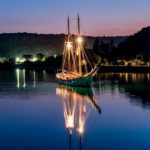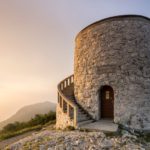Lake Vrana is the biggest natural lake in Croatia and one of the last Mediterranean wetlands. It is located in the heart of the eastern Adriatic coast, between Zadar and Šibenik, separated from the sea by a limestone ridge.
Numerous attractions and rich biodiversity stem from the position of Lake Vrana. Vast reed beds and endangered moist habitats are well preserved, which makes the lake an ornithological paradise. It is a shelter for the endangered and rare bird species that nest here, a wintering ground for around 100,000 waterbirds, and a resting and feeding place for many migratory birds. Lake Vrana is a natural phenomenon, a karst field filled with water, teeming with life. It is an oasis for recreational fishers and cyclists. An outdoor classroom. The proximity of the sea and the islands, the Mediterranean swamp, and Ravni kotari, the most fertile part of the Dalmatian coast, allows different experiences in a small area. Because of its unique position, the lake was important and appreciated throughout history, as we can see from the archeological finds from the time of the Liburnians, Romans, Turks, and Venetians.
WETLANDS FOR THE FUTURE OF MAN?
The Importance and value of Vransko jezero (lake) was recognized in 1983 when its northern part was proclaimed a special ornithological reserve. Being one of the few natural bird habitats with sources of freshwater and an area with distinctive uniqueness and biodiversity, the Vransko jezero and the surrounding area has been proclaimed a Nature park in 1999.
In February 2013, Nature Park Vransko jezero has been listed in the world important wetlands as the biggest permanent waterbody in Croatia, of extreme importance for many, threatened, and rare bird species in Europe, 256 different species.
Recent scientific research suggests that wetlands play a key role in protecting living beings, including humans, from global warming in the future, because of its enormous potential for CO2 fixation.

BIOLOGICAL DIVERSITY IN ROCK AND WATER
Water is a basic requirement for life. The sources of freshwater, rivers, and lakes in the Mediterranean karst are incredibly important for the people and the rest of the wildlife. Both proximity to the sea and the rich freshwater area of Vransko jezero impress with two equally attractive, and yet different shades of blue.
Did you know that real orchids grow on Vransko jezero? Croatian orchids have flowers that are smaller than those of tropical species that we purchase in flower shops, but this does not mean they are less beautiful.
Wet meadows are very beautiful lakeshore habitats. They are not natural ecosystems – they are created by a man who mowed the grass and grazed cattle, and in this way created the opportunity for many plants that cannot grow in the forest or scrub to grow here.

There are 32 species of dragonflies recorded in Nature Park. These insects are skillful flyers and make up an important part of the food web of the lake due to its location between small invertebrates, that they eat, and fish, amphibians, and birds for which they represent a valuable prey.
Author: www.pp-vransko-jezero.hr/en/





